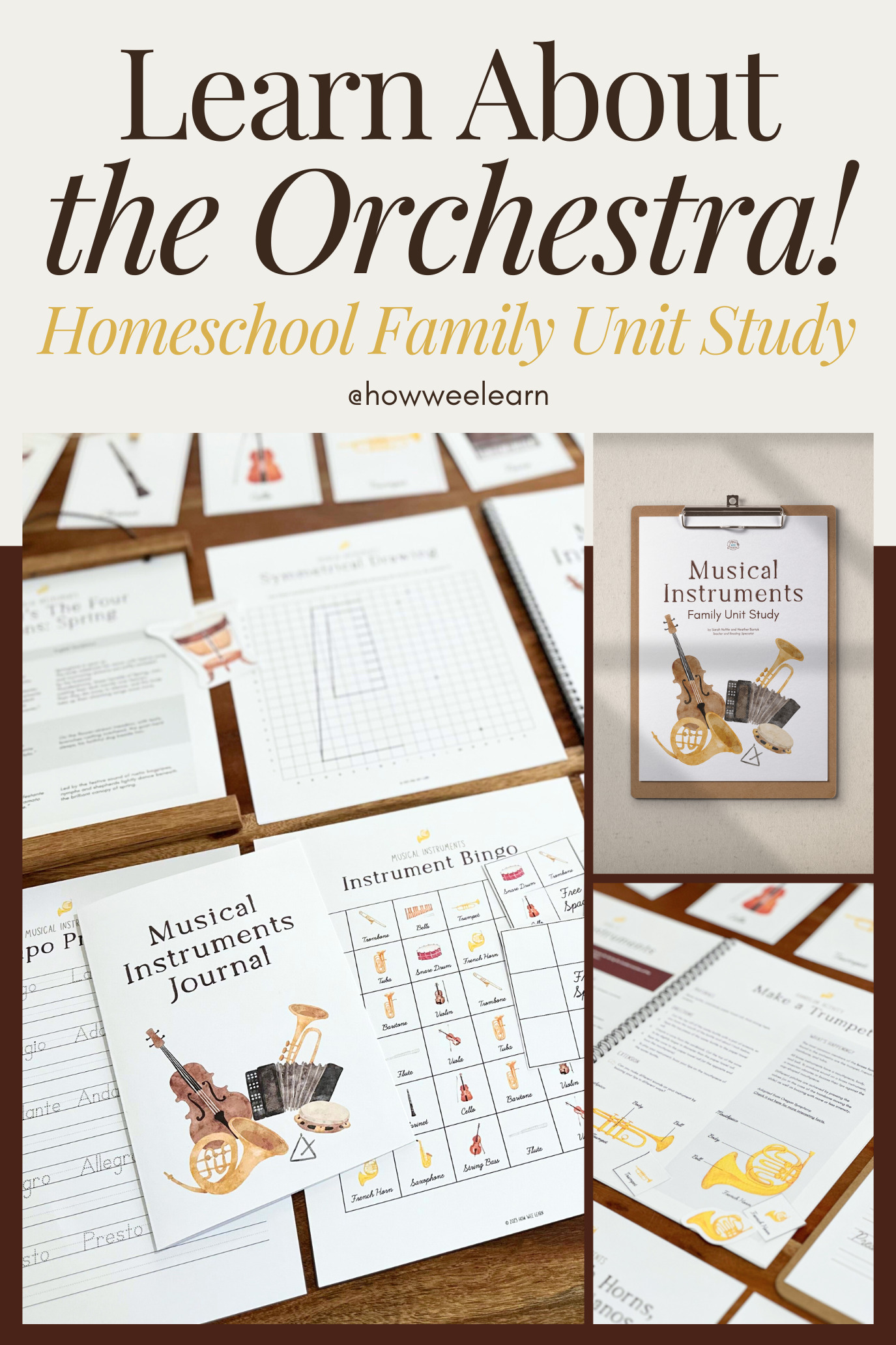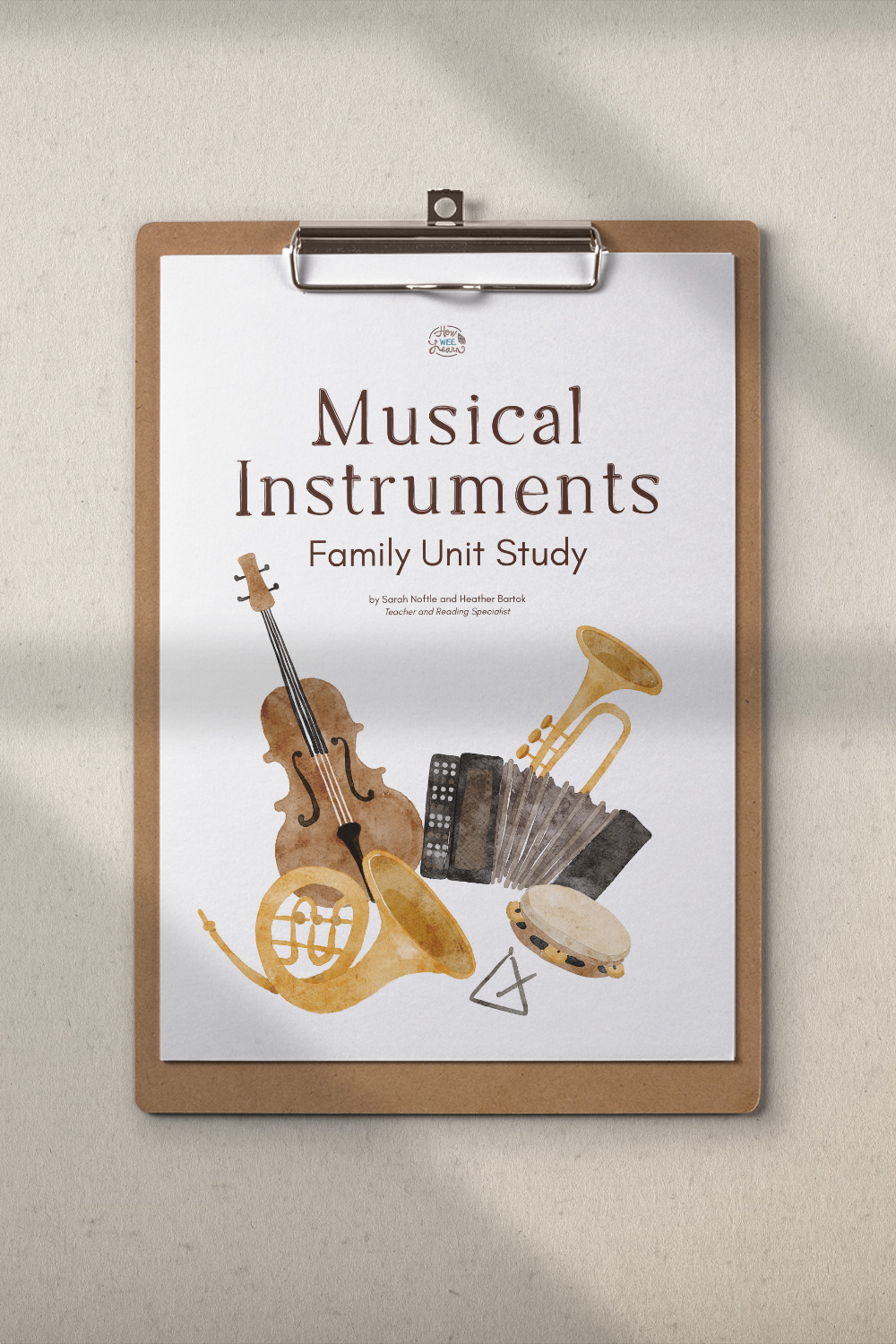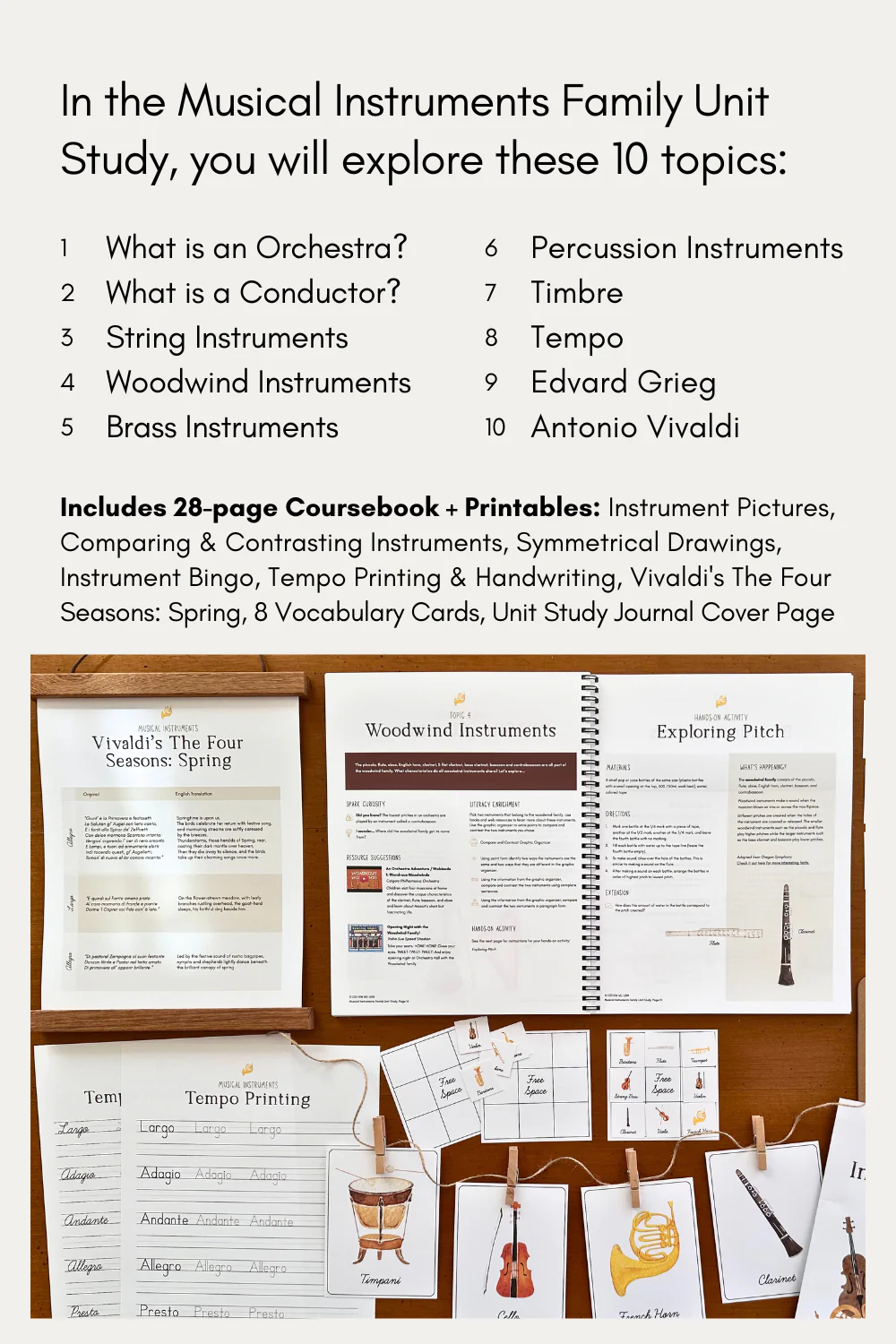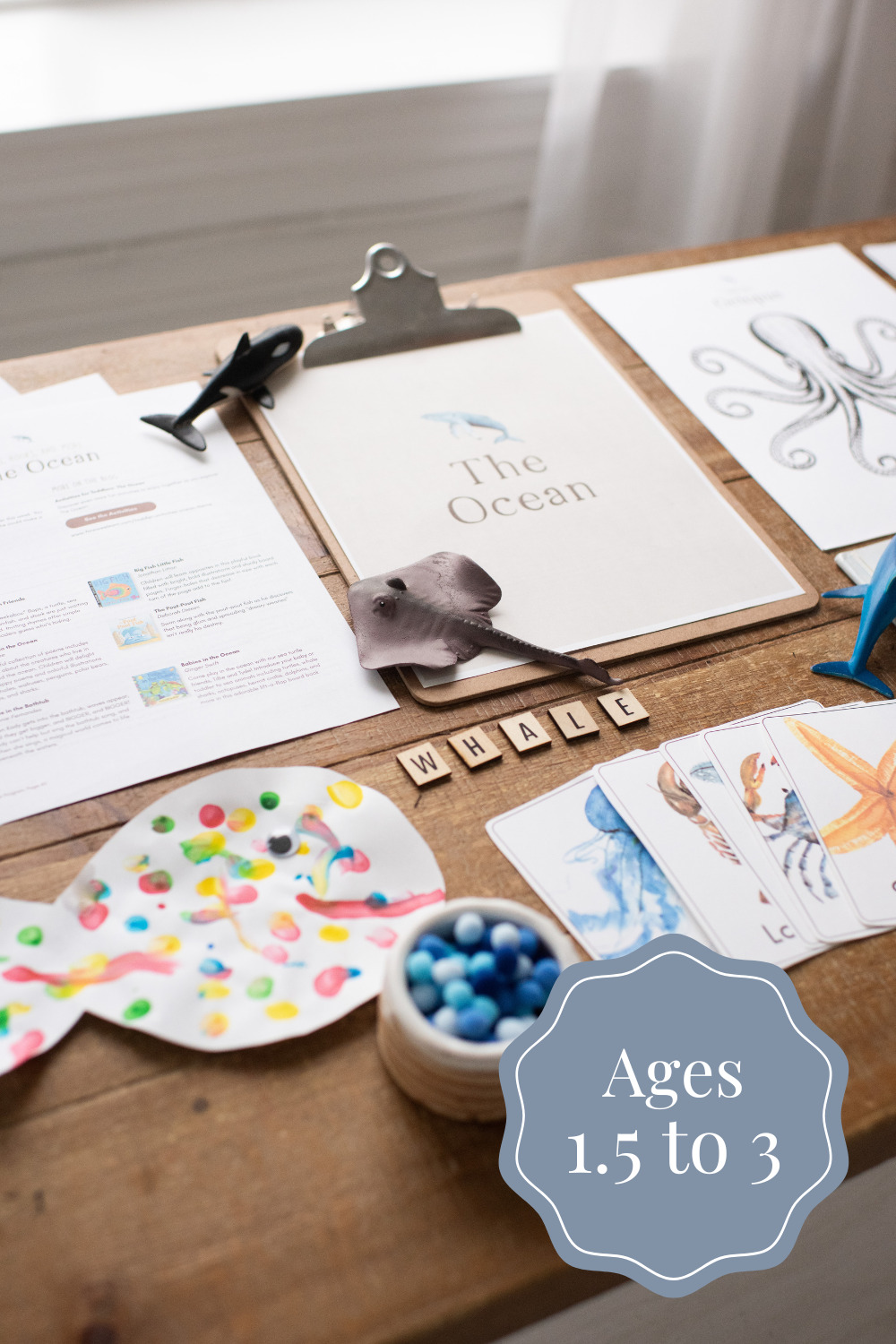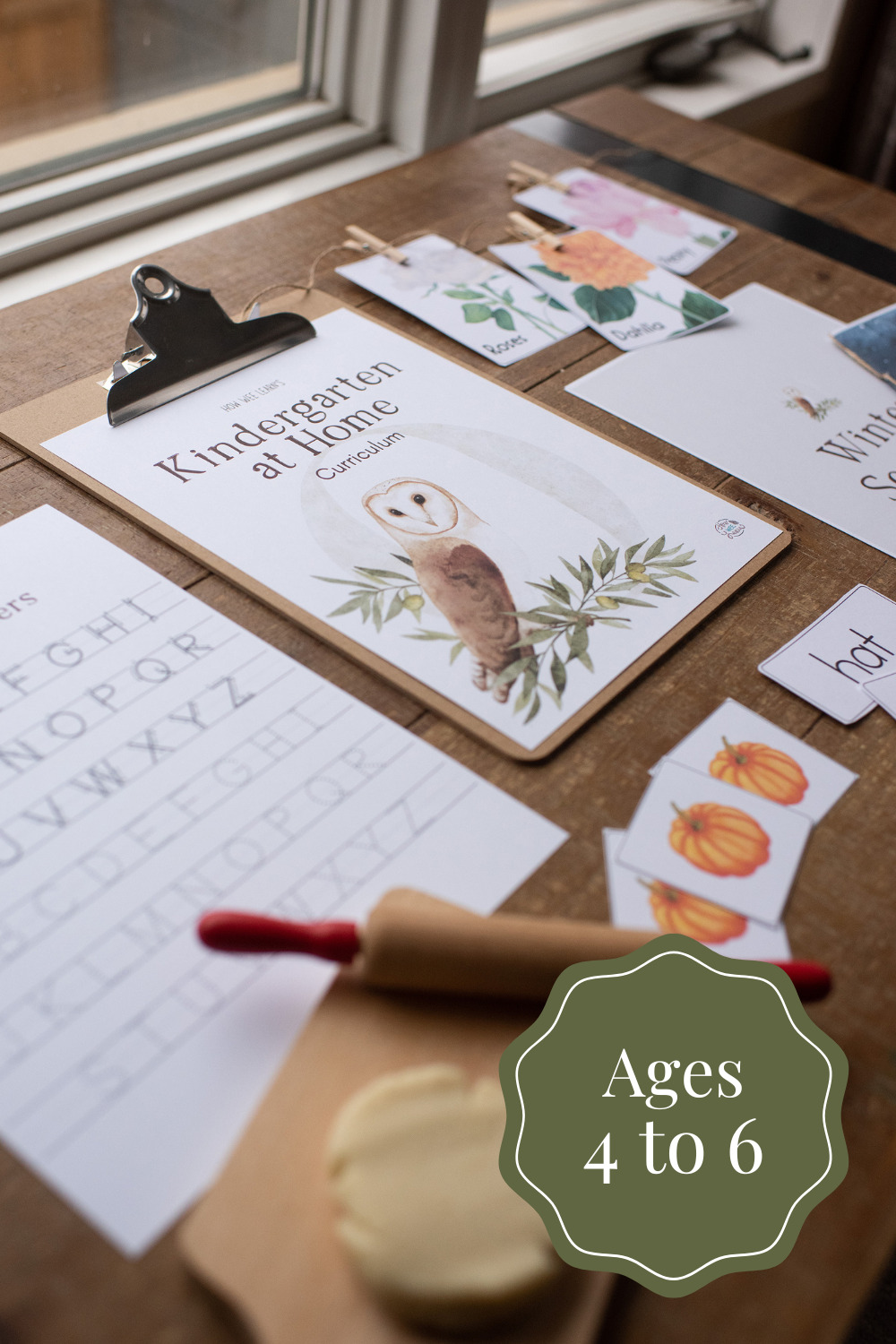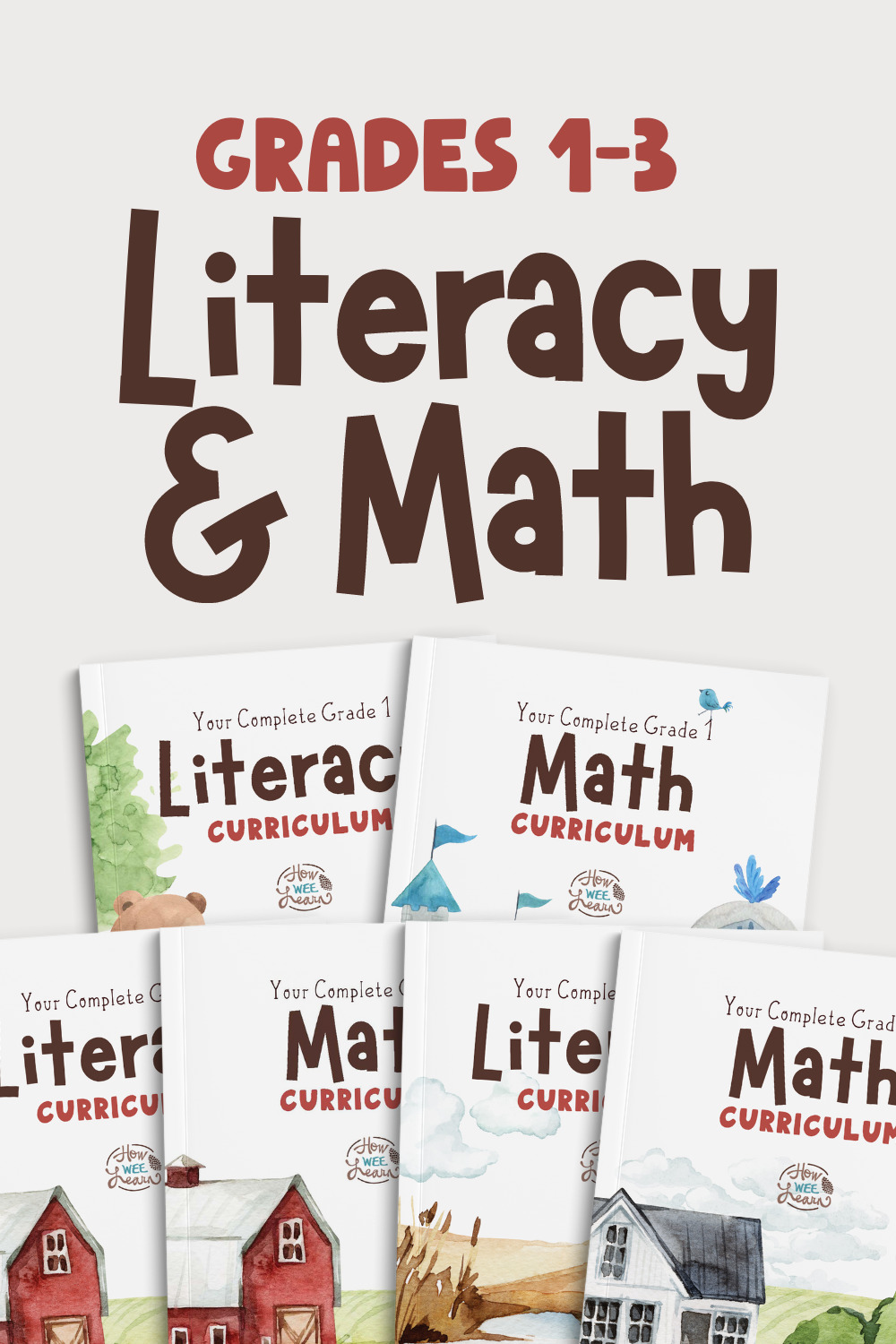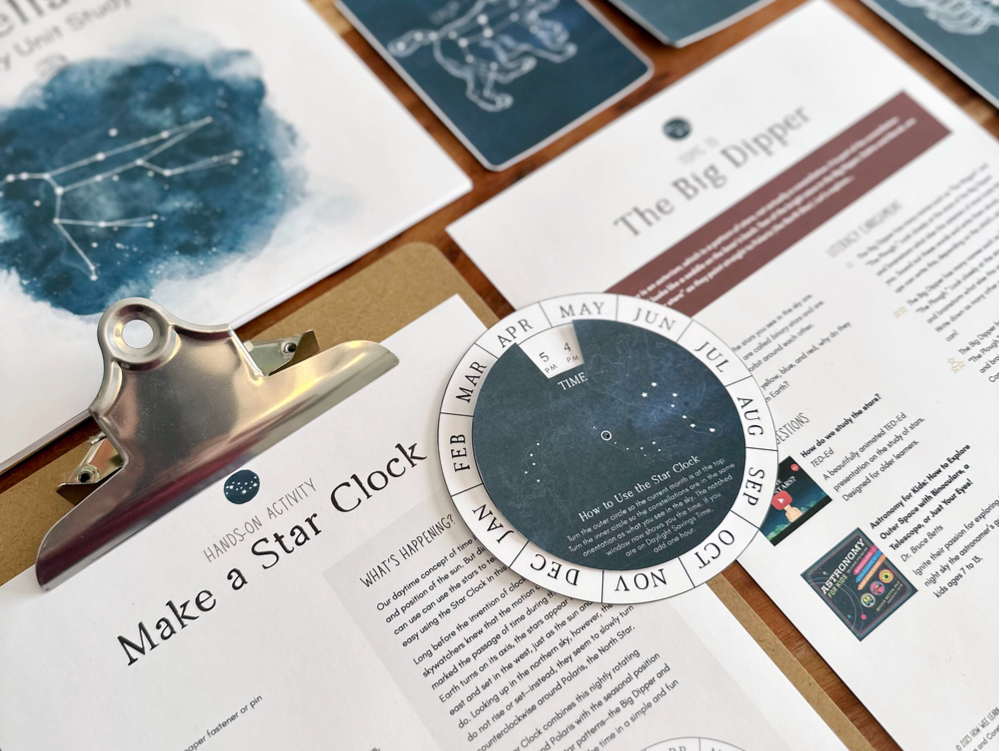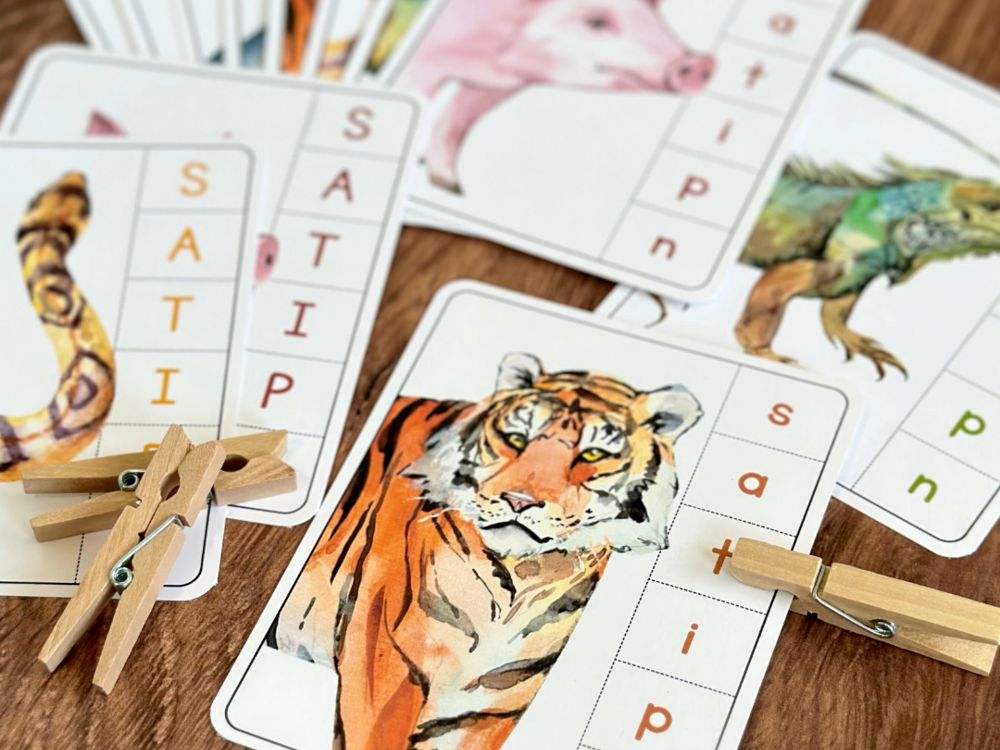Does teaching music within your homeschool intimidate you? Well, fret no more! We have an amazing homeschool music unit study that makes music accessible to all families, regardless of musical background or knowledge.
Introducing the newest addition to our line-up of Family Unit Studies: Musical Instruments! Learn all about the four families of instruments: strings, woodwinds, brass, and percussion. Then, have a blast creating your own instruments to experiment with sound. This unit also explores some of the elements of music as well as the composers Greig and Vivaldi!
Music is truly an enriching subject for any homeschool. This homeschool music unit takes music from an interdisciplinary perspective, making it a wonderful topic for kids of all ages to explore.
Below, you can see the ten topics from our Musical Instruments Family Unit Study and the hands-on activities we enjoyed for each topic.
What is a Family Unit Study?
But first… what exactly is a Family Unit Study?
This unit study, like all of our ever-growing library of unit studies, takes one big topic—Musical Instruments—and breaks it down into ten manageable, bite-sized learning topics. This format gives you the freedom to dive into learning at a pace that works for your family.
Each of the ten topics included with a unit study contains everything you need for that topic, including:
- a curated YouTube video,
- suggested information to read,
- a “what’s happening” section,
- an interesting fact,
- a discussion questions
- literacy and math extension questions,
- and an ultimate-can’t-be-beat hands-on activity!
Perhaps you do one topic per day, perhaps one per week. Whatever suits your fancy! You can learn about music and instruments and explore a topic from start to finish in about 1-2 hours.
Get a FREE Family Unit Study Sample
Want to see what our unit studies are like? You can download a sample from the Stars and Constellations Family Unit Study right here:
Homeschool Music Unit Study Topics
Here are some of the hands-on learning activities you and your little ones will enjoy as you learn about orchestral instruments with the Musical Instruments Family Unit Study:
Topic 1: What is an Orchestra?
What exactly is an orchestra? You will be introduced to a variety of instruments and what families they belong to. Apply your knowledge during a playful game of Eye Spy Orchestral Instruments.
Topic 2: What is a Conductor?
Who is that person at the front of an orchestra waving their hands, and why are they important? Learn about the role of the conductor and how their leadership enables the orchestra to play as an ensemble. Try out conducting to a piece of music in 4/4 time using the conducting pattern from the video resource.
Topic 3: String Instruments
Discover the characteristics of string instruments. Explore sound production when you create your own DIY String Instrument out of recycled materials.
Topic 4: Woodwind Instruments
What characteristics do all woodwind instruments share? Learn all about the woodwind family, then create your own woodwind instrument and create different pitches in the Exploring Pitch activity.
Topic 5: Brass Instruments
Discover the shared characteristics of the brass family. Create your own brass instrument in the Make a Trumpet activity.
Topic 6: Percussion Instruments
Percussion instruments are hit, shaken, or scraped to produce sound. Put your design thinking skills to the test with the DIY Percussion Instrument building challenge.
Topic 7: Timbre
What makes a flute sound different than a trumpet? Timbre is the element of music that describes tone color. In this hands-on activity, you will learn to differentiate between the sounds of various instruments while playing Instrument BINGO!
Topic 8: Tempo
Tempo is the speed of the music. Learn the Italian terms for the most common tempos, then move and groove to a fun game of Tempo Freeze Dance!
Topic 9: Grieg and In the Hall of the Mountain King
Grieg’s “In the Hall of the Mountain King” is one of the most recognizable pieces of classical music. Listen to an orchestral performance of this composition, then create your own movements to represent the tempo and tempo changes in the Grieg-inspired movement hands-on activity.
Topic 10: Vivaldi and The Four Seasons Spring
Vivaldi’s The Four Seasons is comprised of four movements, one for each of the seasons: spring, summer, autumn, and winter. Listen to part of the spring movement and use your creativity to draw spring scenery inspired by Vivaldi’s composition.
And there you have it, the ten learning topics that make up our great big Musical Instruments Unit Study! I hope you will pop on over to check it out and consider purchasing it for you and yours.
Get the Complete Homeschool Music Unit Study
Grab the full Musical Instruments Unit Study right here: https://shop.howweelearn.com/products/family-unit-study-musical-instruments
Thank you so much for reading!
xo
Sarah
